
|
|
| . |
SynqNet Topologies
|
||||
String and Dual String network topologies support termination for the last node at the end of the string(s). Additional topologies such as Ring-of-Rings, and Tree topology will be supported in the future.
The String Topology is the most basic network configuration. Packets are sent downstream from the controller to the nodes. Each node repeats the downstream data to the next node. Packets are also sent upstream from the nodes to the controller. Each node repeats the upstream data to the next node. If a cable breaks, the nodes downstream from the break will no longer be able to send/receive packets to/from the controller.
Due to the un-terminated nature of a String Topology, discovering a topology of this type requires a timeout period to detect the end of the string. Therefore, more time is needed to discover an un-terminated String Topology than other network types. To reduce the discovery time, add a Loop-back Connector to the end of the topology (String Topology with Termination).
A String Topology has nodes connected to the controller’s OUT port or the controller’s IN port, but not both. A Dual String Topology has nodes that are discovered on both the controller’s OUT port and IN port.
NOTE: The String Topology does NOT support fault recovery.
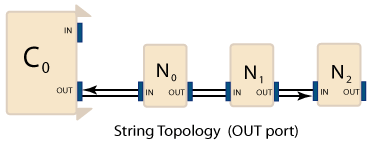
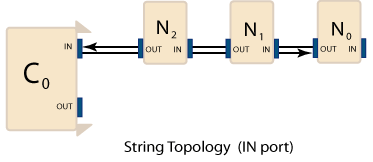
The Dual String Topology is a variation of the String network configuration. A Dual String network is a single SynqNet network with nodes connected to both the controller’s OUT port and IN port. Packets are sent downstream from the controller to the nodes via the OUT port and IN port. Each node repeats the downstream data to the next node. Packets are also sent upstream from the nodes to the controller. Each node repeats the upstream data to the next node. If a cable breaks, the nodes downstream from the break will no longer be able to send/receive packets to/from the controller.
Due to the un-terminated nature of a Dual-String Topology, discovering a topology of this type requires a timeout period to detect the end of the string. Therefore, more time is needed to discover an un-terminated String Topology than other network types. To reduce the discovery time, add a Loop-back Connector to the end of the topology (Dual String Topology with Termination).
NOTE: The Dual String topology does NOT support fault recovery. Dual String was added in the 03.03.00 software release.
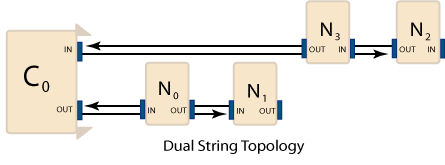
The String and Dual String Topologies support both termination and non-termination. A String or Dual String network with termination is the same as a String or Dual String topology, except a "loop-back" connector is added to the last node(s). The advantage of using a terminator on the last node is that the network initialization time is reduced, because the controller can deterministically find the last node on a network.
NOTE: The Terminated String Topology does not support fault recovery.
Please see the Loop-back Connector page to learn how to create your own Loop-back Connector.
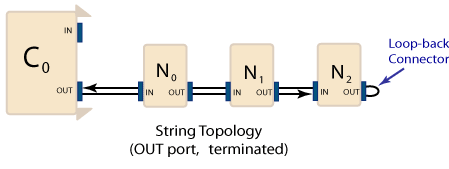
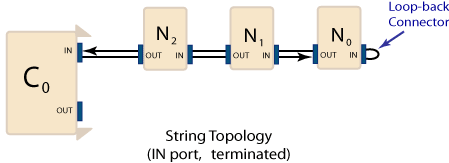
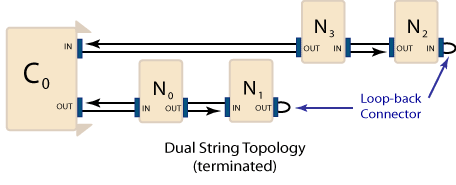
The Ring Topology is similar to the string topology, except an idle link is added between the last node and the controller. During normal operation the packet routing is identical to a string topology. If a cable breaks, the packets are automatically routed around the break using the idle link. Please see SynqNet Fault Recovery for more details.
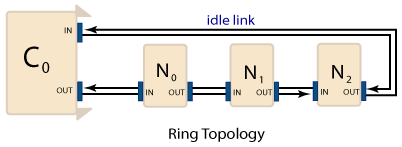
| | | Copyright © 2001-2021 Motion Engineering |